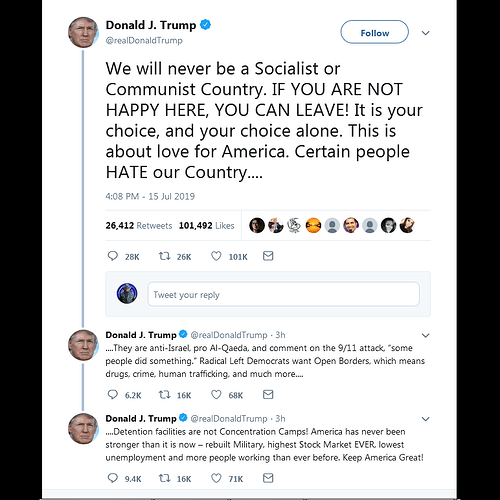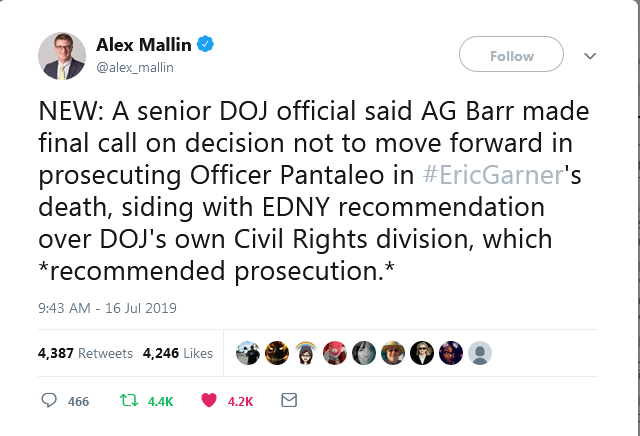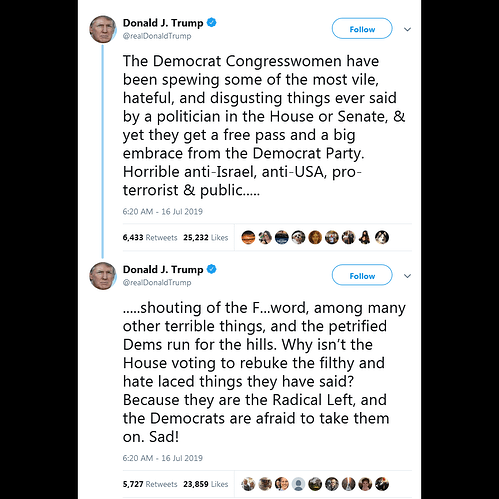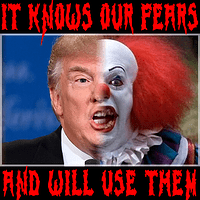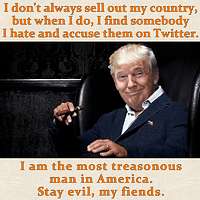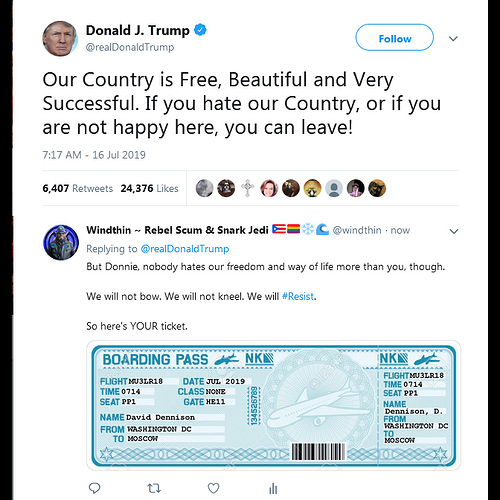BOOM - read this. 
And Roger Stone was very much tied to Assange…here comes some more evidence about what was Assange’s role in election meddling.
The security logs noted that Assange personally managed some of the releases “directly from the embassy” where he lived for nearly seven years. After the election, the private security company prepared an assessment of Assange’s allegiances. That report, which included open-source information, concluded there was “no doubt that there is evidence” that Assange had ties to Russian intelligence agencies.
UC Global did not respond to multiple requests for comment.
Assange, a native of Australia, has always denied working for the Kremlin and has insisted that the source of the leaks “is not the Russian government and it is not a state party.” He also said he would have published damaging information about then-candidate Donald Trump if he had received it.
The US announced criminal charges against Assange earlier this year for his role in the 2010 leaks of secret diplomatic cables and Pentagon war logs, which WikiLeaks got from then-US Army intelligence analyst Chelsea Manning. British police yanked Assange from the embassy in April. He is now serving a one-year prison term in London for skipping bail in the UK, while aggressively fighting extradition to the US.
WikiLeaks did not respond to requests for comment. Assange’s lawyers declined to comment. Assange maintains his innocence and WikiLeaks says the charges are “the worst attack on press freedom in our lifetime.”
…
Assange also issued a special list of people who were able to enter the embassy without showing identification or being searched by security. He was even granted the power to delete names from the visitor logs. To avoid surveillance cameras, Assange occasionally met guests inside the women’s bathroom, according to the security reports.
This all leaves open the possibility that additional sensitive meetings took place but are still secret.
Quickly, the once-mundane diplomatic mission in the heart of London became a hotbed of tension and suspicion. Throughout Assange’s stay at the embassy, Ecuador employed three security companies to conduct constant surveillance. Assange installed his own recording devices and used noise machines to stymie the snooping, according to the documents obtained by CNN.
The task of controlling Assange proved difficult. Fistfights broke out between Assange and the guards. He smeared feces on the walls out of anger.
Assange also maintained direct contact with senior officials in Ecuador, including former Foreign Minister Ricardo Patiño, and regularly used those connections to threaten embassy staff, according to the surveillance documents and two Ecuadorian government sources who spoke to CNN. He claimed he could get people fired, even the sitting ambassador.
Assange’s authority appeared at times to rival that of the ambassador. In December 2013, Ambassador Juan Falconí wrote a letter to Assange and said that “you cannot give instructions contrary to mine.”
CNN reached out to the four ambassadors who overlapped with Assange’s time at the embassy. Only Falconí would comment, saying the Ecuadorian government had never pressured him to give Assange special treatment and that he had established rules for Assange to follow.
Several current and former Ecuadorian government officials, including Correa and Patiño, did not respond to multiple requests for comment. While Correa was in office, he responded to criticism over harboring Assange by doubling down on the asylum offer and holding Assange up as a symbol of Ecuador’s commitment to freedom of the press.
Referring to Assange, Correa pointed out that “the icon of freedom of expression chooses to take refuge in the embassy of Ecuador,” in a 2012 interview with RT en Español, a Spanish-language network controlled by the Kremlin. The Russian government operates television networks around the world to spread propaganda, and it reaches American audiences on its flagship English-language station, RT.
Despite the years of strife, Assange was allowed to stay and prepared to wield his power when the moment was right. That moment came in summer 2016, a pivotal time in the US presidential campaign.
Russia comes knocking
By June, Trump and Democratic candidate Hillary Clinton had emerged as the de facto nominees of their parties and were gearing up for what would be a bruising general election. The campaign took a historic turn on June 14, when the Democratic National Committee announced that it had been hacked and blamed Russia – which Trump dismissed as a farce.
Assange was busy back at the embassy. That month, members of the security team worked overtime to handle at least 75 visits to Assange, nearly double the monthly average of visits logged by the security company that year. He met Russian citizens and a hacker later flagged in the Mueller report as a potential courier for emails stolen from the Democrats.
Summer 2016: The releases begin
June 14, 2016
Democratic National Committee announces it’s been hacked and blames Russia.
June 19, 2016
Assange asks the Ecuadorian embassy to beef up his Internet connection.
Embassy staff give Assange technical support “for data transmission,” according to the surveillance reports, and help install new equipment.
July 6, 2016
WikiLeaks asks Russian hackers for materials about Clinton “because the (Democratic National Convention) is approaching and she will solidify bernie (Sanders) supporters behind her after.”
July 14, 2016
Russian hackers send encrypted files to WikiLeaks, titled “big archive.”
Assange meets for hours with German hackers Andrew Müller-Maguhn and Bernd Fix.
July 18, 2016
Republican National Convention kicks off in Cleveland.
At the embassy, an Ecuadorian security guard abandons his post to receive a package outside the embassy from a man in disguise.
WikiLeaks tells the Russian hackers they got the files.
July 22, 2016
WikiLeaks releases more than 20,000 internal files from the Democratic National Committee.
Also in June, WikiLeaks secretly communicated with Russian hackers and Assange publicly announced plans to release new material about Clinton. The Mueller report says the Russian hackers obscured their identities by using online personas for all their communications with WikiLeaks, which included emails and direct messages to WikiLeaks’ account on Twitter.
Assange took at least seven meetings that month with Russians and others with Kremlin ties, according to the visitor logs.
Two encounters were with a Russian national named Yana Maximova, who could not be reached for comment. Almost nothing is known about Maximova, making it difficult to discern why she visited the embassy at key moments in June 2016. During her two visits that month, she met with Assange in the middle of the day in the embassy’s conference room.
Assange also had five meetings that month with senior staffers from RT, the Kremlin-controlled news organization.

